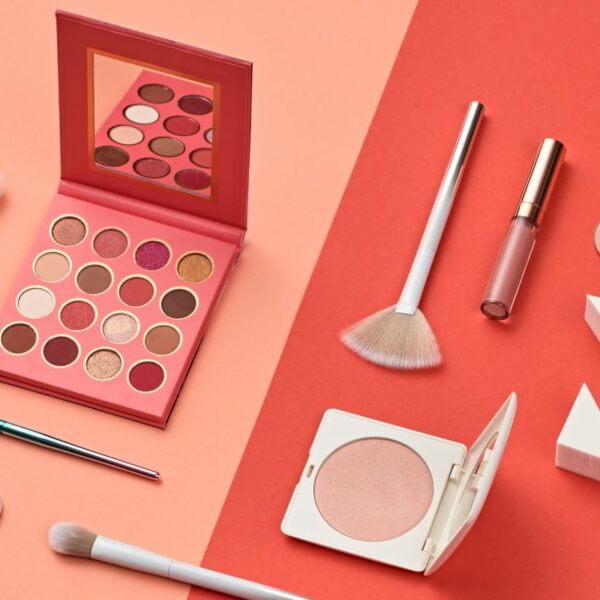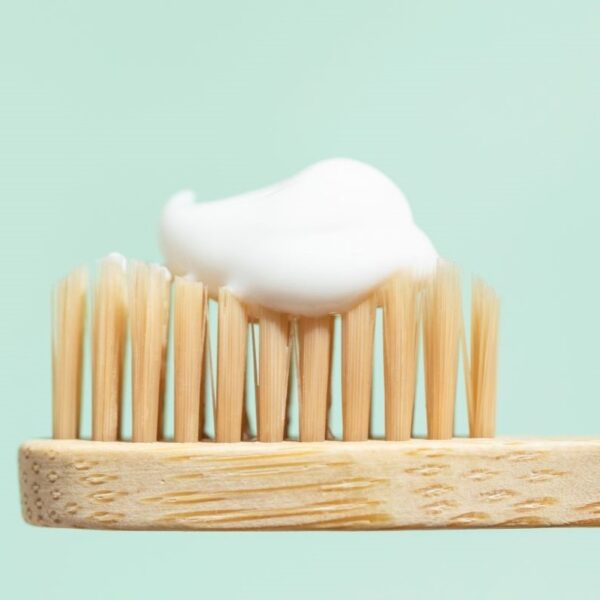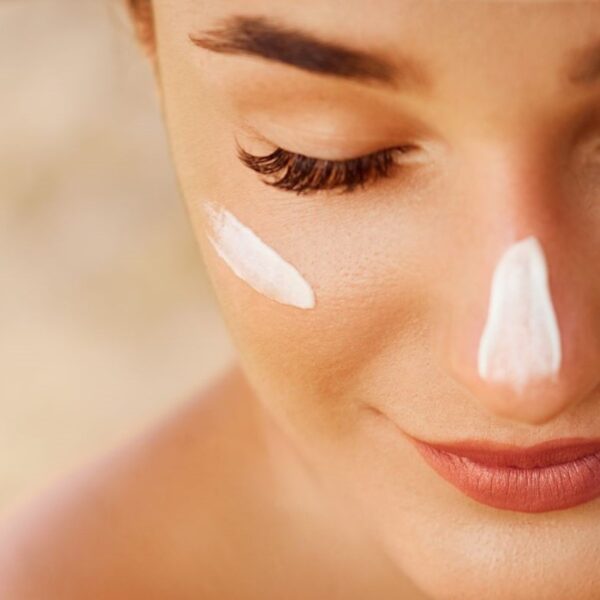Ammonium Lauryl Sulfate (ALS) is a salt classified as a sulfate ester. It is integral to the cosmetics and personal care product industry. Its high-foaming characteristics make it desirable in products that consumers equate with a lathering or bubbling action, such as shampoos, body washes, and bubble baths. Its application also extends to toothpaste, facial cleansers, and shaving creams, where it aids in product distribution and enhances the overall user experience.
What is Ammonium Lauryl Sulfate?
Ammonium Dodecyl Sulfate has the chemical formula (CH₃(CH₂)₁₀CH₂OSO₃NH₄). The common name is Ammonium lauryl sulfate (ALS). The anion comprises a nonpolar hydrocarbon chain and a polar sulfate end group. The combination of nonpolar and polar groups confers surfactant properties to the anion, facilitating the dissolution of both polar and nonpolar materials.
Source: Wikipedia
Like any other surfactant, Ammonium lauryl sulfate makes a good base for cleansers because it disrupts the hydrogen bonding in water. Hydrogen bonding is the primary contributor to the high surface tension of water. In solution, the lauryl sulfate anions and the ammonium cations separate. The former anions align themselves into what is known as a micelle, in which the ions form a sphere, with the polar heads (the sulfate) on the surface of the sphere and the nonpolar hydrophobic tails pointing inwards towards the center. The water molecules around the micelle arrange themselves around the polar heads, disrupting their hydrogen bonding with the water surrounding them. The overall effect of having these micelles in an aqueous (water) environment is that the water becomes more capable of penetrating things like cloth fibers or hair. It becomes more readily available to solvate anything coming off the substance.
Use of Ammonium Lauryl Sulfate in Personal Care Products
ALS is classified as an alkyl sulfate and is an anionic surfactant found primarily in shampoos and body wash as a foaming agent. Alkyl sulfates are the most commonly used primary surfactants in most shampoos. These surfactants are excellent cleansers and foamers. They are cost-effective and can easily be thickened with sodium chloride, which makes them a popular choice for many shampoo formulations. It is a mild anionic surfactant suitable for use in formulations of neutral or slightly acidic personal care products and cosmetics such as body and hair shampoos, bubble baths, and liquid soaps. The product exhibits copious foam, outstanding detergency, wetting and emulsifying properties, and easy viscosity control.
Applications in Personal Care Industry Segment
Ammonium Lauryl Sulphate (ALS) is an anionic surfactant found primarily in shampoos and body wash as a foaming agent. Chemically, Lauryl sulfates are very high-foam surfactants that disrupt the surface tension of water by forming micelles around the polar water molecules. When deciding between the sodium and ammonium salts, ALS/ALES produce a slightly higher amount of foam and can be easier to thicken. Still, care has to be taken when using these surfactants because they can release free ammonia at higher pH values.
| Function | Applications |
| Cleansing | Ordinary hair shampoos are designed to clean hair with moderate sebum production and without chemically processed hair. These shampoos offer good cleansing using sodium or ammonium lauryl sulfate with minimal conditioning. |
| Anionic Surfactant | Anionic surfactants have good lathering and detergent properties, which are necessary to remove dirt. |
| Foaming | Foaming cleansers contain a significant amount of well-foaming surfactants. These products are the most popular today and often provide the most refreshing sensation afterward. Most body washes, hand soaps, and facial cleansing products belong to this category. These products are typically surfactant solutions, gels, scrubs, and O/W emulsions with high cleaning power. Foaming products can contain the same basic ingredients for the body and the face. |
Product Examples
| Type | Examples |
| Hair Care | Shampoos, Gentle Hair Cleansers |
| Skin Care | Face Cleansers, Body Wash, Bath Foam |
Properties of Ammonium Lauryl Sulfate
| Appearance at 25 °C | Yellowish Viscous Liquid |
| pH (10% Aqueous) | 5-6 |
| Molecular Weight (g/ml) | 283.43 g/mol |
| Density at 18°C (g/cm3) | 1.02 g/cm3 |
| Solubility | Water Soluble |
| Refractive Index | 1.37 |
| Boiling Point | 418 °C (784 °F; 691 K) |
| Odor | Odorless |
| Shelf Life | 12-18 months |
| Storage Conditions | Store in well-filled, tightly sealed containers in a cool, dry place. Ideal Storage Temperature: 15-25°C |
| Stability | Stable. Incompatible with strong oxidizing agents. |
Typical Formulations
Shower Gel for Dry Skin
The following formulation table is for a skin-compatible body wash with LACTIL, an NMF mimic. It has strong refatting properties without additional thickener.
| PHASE | INCI Name | TRADE Name | Supplier | % Wt. |
| A | Polyglyceryl-4 Caprate | TEGOSOFT PC41 MB | Evonik | 2.00 |
| Glyceryl Oleate | TEGIN O V MB | Evonik | 0.5 | |
| B | Ammonium Lauryl Sulfate | Texapon A | BASF SE | 26.00 |
| Perfume | Fragrance | various | 0.5 | |
| Aqua | Water | – | 56.0 | |
| Sodium Lactate; Sodium PCA; Glycine; Fructose; Urea; Niacinamide; Inositol;Sodium Benzoate; Lactic Acid | LACTIL | Evonik | 1.0 | |
| Cocamidopropyl Betaine | TEGO Betain F 50 | Evonik | 14.00 | |
| Total | 100 | |||
Source: Knowde
Formulation Procedure
- Mix Polyglyceryl-4 Caprate and Glyceryl Oleate and heat it up until it is clear.
- Then add the other ingredients in the given order.
- Mix gently to avoid foaming.
Ammonium Lauryl Sulfate Formulation Considerations
- Ammonium Lauryl Sulfate is derived from fatty alcohol and can be used in various detergents and personal care formulations. It can be used in systems that require an excellent viscosity response and are sensitive to the presence of hydrotrope.
- Ammonium Lauryl Sulfate is an excellent choice for gel products. It can generate generous foam and is compatible with Alkanolamides and Amphoteric surfactants. Ammonium Lauryl Sulfate can be used with Cocamidopropyl Betaine (CAPB) as a secondary surfactant system for enhanced foaming and non-irritating results on skin applications. This suits mild body washes, shower gels, and bubble baths.
Ammonium Lauryl Sulfate Safety & Regulatory Concerns
FDA Information: The U.S. Food and Drug Administration (FDA) includes Ammonium Lauryl Sulfate as an indirect food additive. For example, both ingredients are permitted to be used as components of coatings.
EU Information: Ammonium lauryl sulfate may be used in cosmetics and personal care products marketed in Europe according to the general provisions of the Cosmetics Regulation of the European Union.
Cosmetic Ingredient Review (CIR) Information: The safety of Ammonium Lauryl Sulfate has been assessed by the Cosmetic Ingredient Review (CIR) Expert Panel on two separate occasions (1983 and 2002), concluding each time that the data showed these ingredients were safe on formulations designed for brief, discontinuous use, followed by thorough rinsing from the surface of the skin. In products intended for prolonged contact with skin, concentrations should not exceed 1%.
Identification Numbers
| CAS Number | 2235-54-3 |
| EC Number | 218-793-9 |
As per the Cosmetic Ingredients Review, the maximum usage level of Ammonium Lauryl Sulfate in the Personal Care industry is as follows.
| Category | Usage Level |
| Baby Shampoos | 10-25% |
| Bath Oils, Tablets & Salts | 25-50% |
| Bubble Baths | 25-50% |
| Hair Shampoos (Non-coloring) | 5-10% |
| Hair Shampoos (Coloring) | 10-25% |
| Bath Soaps & detergents | 25-50% |
| Skin Cleansing Preparations (cold creams, lotions, liquids & pads) | 1-5% |
| Other Skin Care Preparations | 0.1-1% |
Source: SagePub
Health Effects of Ammonium Lauryl Sulfate
- In high concentrations, this molecule may cause severe eye and skin irritation. Inhalation may irritate the respiratory system.
- Ingestion may cause irritation, nausea, or diarrhea.
- In a 1983 report by the Cosmetic Ingredient Review, shampoos containing up to 31% ALS registered 6 health complaints out of 6.8 million units sold. These complaints included two scalp itches, two allergic reactions, one hair damage, and one complaint of eye irritation.
- The CIR report concluded that sodium and ammonium lauryl sulfate “appears safe in formulations designed for discontinuous, brief use followed by thorough rinsing from the skin’s surface. In products intended for prolonged use, concentrations should not exceed 1%.”
- The Human and Environmental Risk Assessment (HERA) project thoroughly investigated all alkyl sulfates. As such, the results they found apply directly to ALS.
- Most alkyl sulfates exhibit low acute oral toxicity, no toxicity through exposure to the skin, concentration-dependent skin irritation, and concentration-dependent eye irritation.
- In a two-year study on rats, they did not sensitize the skin or appear carcinogenic. The report found longer carbon chains (16-18) were less irritating to the skin than chains of 12-15 carbons.
- In addition, concentrations below 1% were essentially non-irritating, while concentrations greater than 10% produced moderate to intense skin irritation.
Environmental Concerns About Ammonium Lauryl Sulfate
- The HERA project also conducted an environmental review of alkyl sulfates. All alkyl sulfates are readily biodegradable, and standard wastewater treatment operations removed 96-99.96% of short-chain (12-14 carbons) alkyl sulfates.
- Even in anaerobic conditions, at least 80% of the original volume is bio-degraded after 15 days, with 90% degradation after 4 weeks.
Fun Facts About Ammonium Lauryl Sulfate
- Ammonium Lauryl Sulfate belongs to the family of surfactants, which reduce the surface tension of liquids. Their unique properties make them ideal for creating foamy and bubbly products.
- As a surfactant, Ammonium Lauryl Sulfate disrupts hydrogen bonding in water, which helps water penetrate substances like cloth fibers or hair, making it easier to remove dirt and grime.
- An environmental review of alkyl sulfates, including Ammonium Lauryl Sulfate, found that they are readily biodegradable, making them a more eco-friendly choice in the personal care industry.
Additional Resources
- CIR – Import Alerts
- European Commission – CosIng: Sodium Lauryl Sulfate
- Industrial Chemicals Australia – Sodium, Ammonium, and Potassium Lauryl Sulfate: Human Health Tier II Assessment
- American Cleaning Institute – Alkyl Sulfates Safety Information
- ChemEurope – Ammonium Lauryl Sulfate
- ECHA – Ammonium Lauryl Sulfate








